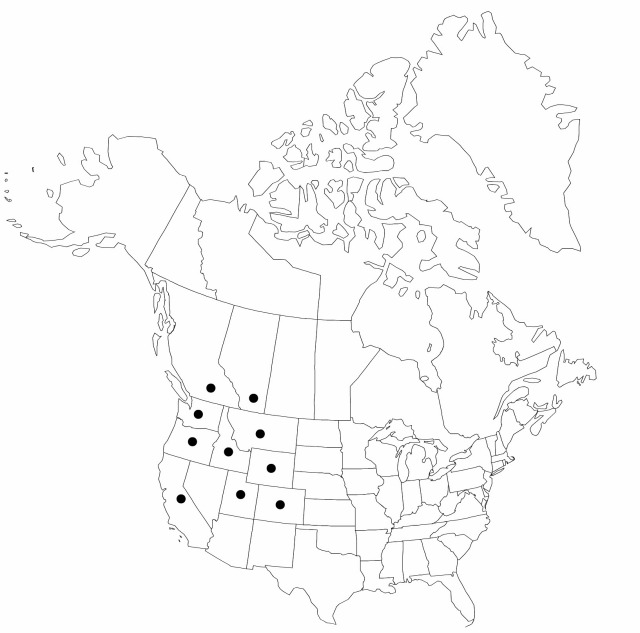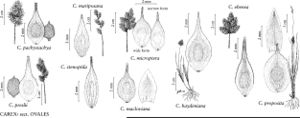Carex haydeniana
in F. V. Hayden, Prelim. Rep. U.S. Geol. Surv. Wyoming [Hayden], 482. 1871.
Plants densely cespitose. Culms 9–30(–40) cm. Leaves: sheaths adaxially white-hyaline, sometimes cross-corrugate adaxially, summits usually U-shaped, sometimes prolonged to 3 mm beyond collar; distal ligules 0.3–2 mm; blades 3–4(–5) per fertile culm, 3–16 cm × 1.5–4 mm. Inflorescences dense, dark brown, green and brown, or gold, 1.1–2.1 cm × 13–18 mm; proximal internode 1–2.5(–3.4) mm; 2d internode 0.5–2 mm; proximal bracts scalelike, shorter than inflorescences. Spikes 5–7(–9), aggregated, individually indistinct broadly ovoid, 6.5–10 × 4.5–8 mm, base and apex usually rounded. Pistillate scales reddish or coppery to dark brown, sometimes with whitish or pale gold midstripe, narrowly ovate to ovate, 3–4.8 mm, shorter and narrower than perigynia, apex acute to obtuse. Perigynia ascending to ascending-spreading, light brown to coppery or dark brown, conspicuously 0–3(–8)-veined adaxially, lance-ovate to broadly ovate, flat except over achene, 4–6.5 × 1.5–2.6 mm, 0.3–0.5 mm thick, margin flat, including wing 0.3–0.6(–0.8) mm wide, ciliate-serrulate at least on distal body; beak dark brown to black, white-hyaline at tip, cylindric, unwinged, at least 1 mm, ± entire for 0.3–0.6 mm, abaxial suture inconspicuous or with conspicuous white margin, distance from beak tip to achene (2.3–)2.6–3.8 mm. Achenes elliptic or ovate, (1.2–)1.4–1.8 × 0.8–1.1(–1.3) mm, 0.3–0.45 mm thick. 2n = 82.
Phenology: Fruiting summer.
Habitat: Rocky or gravelly subalpine to alpine meadows, slopes, stream banks
Elevation: 1700–4300 m
Distribution

Alta., B.C., Calif., Colo., Idaho, Mont., Oreg., Utah, Wash., Wyo.
Discussion
See comment under 110. Carex microptera.
Selected References
None.
